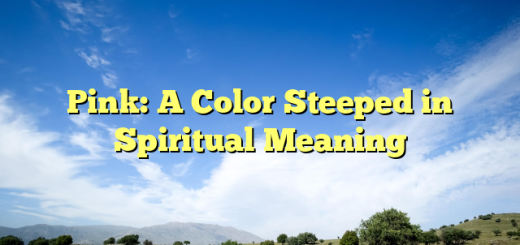Sufi Mysticism & Christian Contemplation Paths

Hey there, amazing readers! 🖐️ Just a quick note: yes, we know there are a lot of ads here. Trust us, we get it—it’s not the prettiest look, but they help us keep this blog alive and kicking. Those pesky little ads cover the costs of all the behind-the-scenes magic, from hosting and tech stuff to creating content we hope you’ll love.
We’re committed to delivering quality posts, and your support (even just sticking around despite the ads) means everything to us. So, bear with us, and thanks for helping us keep the good vibes rolling. Now, on to the fun stuff! 😉
TRANSLATE BUTTON AT THE END OF THE ARTICLE
Overview: Sufi Mysticism & Christian Contemplation Paths: An Exploration
Sufi Mysticism and Christian Contemplation are two spiritual paths that have captivated individuals throughout history.
Both paths focus on inner journey and divine union, seeking a deeper connection with the divine.
Although rooted in different religious traditions, these paths share similarities and differences that are worth exploring.
This article aims to provide an in-depth understanding of Sufi Mysticism and Christian Contemplation, starting with their origins and principles.
We will then delve into the practices and methods employed by Sufi Mystics and Christian contemplatives.
By comparing and contrasting these paths, we hope to shed light on their unique approaches to seeking divine love and unity with God.
Additionally, we will explore the role of spiritual guides in both traditions and highlight common grounds found in Sufi poetry and Christian mystical literature.
Understanding Sufi Mysticism: Origins and Principles
Sufi Mysticism, also known as Tasawwuf, emerged within the context of Islam in the 8th century CE.
Its origins can be traced back to the teachings of the Prophet Muhammad and the early Muslim mystics.
Sufism emphasizes the inner dimensions of Islam, focusing on experiencing the divine presence and achieving spiritual enlightenment.
The central principles of Sufi Mysticism include the pursuit of divine love, surrendering to God’s will, and attaining unity with the divine through spiritual practices such as chanting, meditation, and whirling.
An Overview of Christian Contemplation: History and Practices
Christian Contemplation has its roots in the early Christian monastic traditions, particularly in the desert fathers and mothers of the 3rd-century CE.
These early Christian mystics sought a deeper union with Christ through practices of silence, solitude, and prayer.
Over the centuries, Christian Contemplation evolved and took various forms within different Christian traditions, including the Eastern Orthodox, Catholic, and Protestant denominations.
Contemplative practices such as centering prayer, lectio divina, and the Jesus Prayer are common in Christian Contemplation.
Paths of Sufi Mysticism: Inner Journey and Divine Union
Sufi Mysticism emphasizes the inner journey towards the divine and the attainment of divine union.
Sufis believe that through spiritual practices and divine guidance, they can experience the presence of God within themselves and achieve a state of oneness with the divine.
These practices include dhikr (remembrance of God), meditation, and various forms of spiritual exercises.
The goal of Sufi Mysticism is to transcend the ego and attain a state of divine consciousness, where the individual becomes an embodiment of divine love.
Christian Contemplation Methods: Silence and Solitude
Christian Contemplation also focuses on the inner journey and the deepening of the relationship with Christ.
One prominent practice in Christian Contemplation is silence, which allows individuals to detach from the distractions of the world and cultivate a receptive state of being.
Solitude is also essential in Christian Contemplation, as it offers a space for individuals to encounter God in the depths of their hearts.
Through silence and solitude, contemplatives seek to open themselves to the presence of Christ and cultivate a listening heart.
Similarities Between Sufi Mysticism and Christian Contemplation
While Sufi Mysticism and Christian Contemplation stem from different religious traditions, they share commonalities in their pursuit of divine love and unity.
Both paths emphasize the importance of inner transformation, seeking the divine presence, and surrendering to God’s will.
Additionally, both Sufi Mysticism and Christian Contemplation employ various practices such as meditation, prayer, and spiritual exercises to deepen one’s connection with the divine.
The emphasis on silence and solitude is another shared aspect, as both paths recognize the value of creating a space for divine encounter.
Differences Between Sufi Mysticism and Christian Contemplation
Despite the similarities, there are significant differences between Sufi Mysticism and Christian Contemplation.
The most apparent distinction lies in their religious contexts, with Sufi Mysticism rooted in Islam and Christian Contemplation in Christianity.
While Sufi Mysticism seeks unity with God through the dissolution of the self, Christian Contemplation aims for union with Christ while maintaining the individual’s identity.
Additionally, Sufi Mystics often incorporate ecstatic practices such as whirling, which are not typically found in Christian Contemplation.
Sufi Mysticism: Seeking Divine Love and Unity with God
Sufi Mysticism places great emphasis on seeking divine love and unity with God.
Sufis believe that by engaging in spiritual practices, they can purify their hearts and remove all veils that obstruct their connection with the divine.
The ultimate goal for Sufi Mystics is the annihilation of the self and the complete absorption into the divine reality.
This state of unity, called fana, allows Sufis to experience divine love and become vessels for God’s grace in the world.
Christian Contemplation: Deepening Relationship with Christ
Christian Contemplation seeks to deepen the relationship with Christ and experience union with Him.
Contemplatives believe that by emptying themselves and surrendering to God’s presence, they can be transformed and conformed to the image of Christ.
Through contemplative practices, Christians aim to become more receptive to the indwelling of the Holy Spirit and to align their will with God’s will.
Christian Contemplation fosters a sense of intimacy and communion with Christ, allowing individuals to participate in His redemptive work in the world.
Sufi Whirling and Christian Contemplative Dance: A Comparison
One notable difference between Sufi Mysticism and Christian Contemplation is the use of ecstatic practices.
Sufi Whirling, also known as Sema, is a form of devotional dance performed by Sufis as a means of reaching a state of spiritual ecstasy.
Through spinning, Sufis aim to transcend the limitations of the physical world and experience a mystical union with the divine.
In contrast, Christian Contemplation does not typically incorporate ecstatic practices like whirling.
However, some Christian contemplatives may engage in contemplative dance as a form of worship and embodiment of their spiritual journey.
Sufi Poetry and Christian Mystical Literature: Common Grounds
Sufi Mysticism and Christian Contemplation share a rich tradition of mystical poetry and literature.
Both traditions have produced remarkable poets and mystics who have sought to express their encounters with the divine through the power of words.
Sufi poetry often employs metaphors and symbols to convey the longing for divine love and the spiritual journey.
Similarly, Christian mystical literature, such as the works of St.
John of the Cross and St.
Teresa of Avila, uses poetic language to describe the soul’s ascent towards divine union.
The common ground found in mystical poetry and literature highlights the universal longing for the divine and the human capacity to express that longing through creative means.
The Role of Spiritual Guides in Sufi Mysticism and Christian Contemplation
Both Sufi Mysticism and Christian Contemplation acknowledge the importance of spiritual guidance on the path to divine union.
In Sufi Mysticism, a spiritual guide, known as a Sheikh or Murshid, plays a crucial role in guiding the disciple towards spiritual awakening.
The spiritual guide provides teachings, practices, and personal guidance to help the disciple navigate the challenges and obstacles on their spiritual journey.
Christian Contemplation also recognizes the significance of spiritual direction, with spiritual directors or confessors offering guidance and support to individuals seeking deeper union with Christ.
These spiritual guides provide wisdom, discernment, and accountability to those on the contemplative path.
Conclusion
Sufi Mysticism and Christian Contemplation are spiritual paths that share a deep longing for divine love and unity with God.
While they have distinct religious contexts and practices, there are also striking similarities in their pursuit of inner transformation and the cultivation of a deep relationship with the divine.
Sufi Mysticism emphasizes the annihilation of the self and the experience of divine love, while Christian Contemplation seeks union with Christ and conformity to His image.
Through practices such as silence, solitude, and prayer, both paths provide individuals with tools to embark on an inner journey that leads to a profound encounter with the divine.
Spiritual guides play a crucial role in guiding seekers on these paths, offering wisdom and support along the way.
Ultimately, whether one chooses the path of Sufi Mysticism or Christian Contemplation, both offer a transformative journey towards divine love, unity, and spiritual awakening.

The Enlightenment Journey is a remarkable collection of writings authored by a distinguished group of experts in the fields of spirituality, new age, and esoteric knowledge.
This anthology features a diverse assembly of well-experienced authors who bring their profound insights and credible perspectives to the forefront.
Each contributor possesses a wealth of knowledge and wisdom, making them authorities in their respective domains.
Together, they offer readers a transformative journey into the realms of spiritual growth, self-discovery, and esoteric enlightenment.
The Enlightenment Journey is a testament to the collective expertise of these luminaries, providing readers with a rich tapestry of ideas and information to illuminate their spiritual path.
Our Diverse Expertise 🌟
While our primary focus is on spirituality and esotericism, we are equally passionate about exploring a wide range of other topics and niches 🌍📚. Our experienced team is dedicated to delivering high-quality, informative content across various subjects ✨.
To ensure we provide the most accurate and valuable insights, we collaborate with trusted experts in their respective domains 🧑🏫👩🏫. This allows us to offer well-rounded perspectives and knowledge to our readers.
Our blog originally focused on spirituality and metaphysics, but we’ve since expanded to cover a wide range of niches. Don’t worry—we continue to publish a lot of articles on spirituality! Frequently visit our blog to explore our diverse content and stay tuned for more insightful reads.







